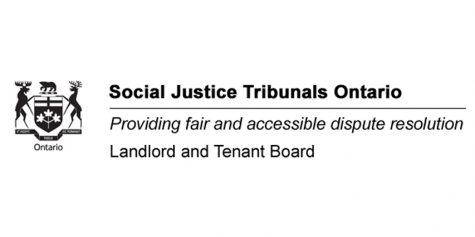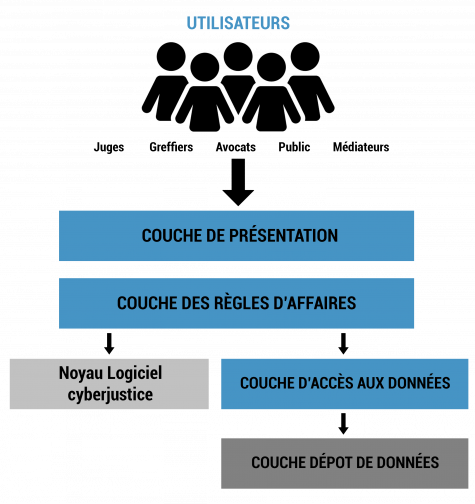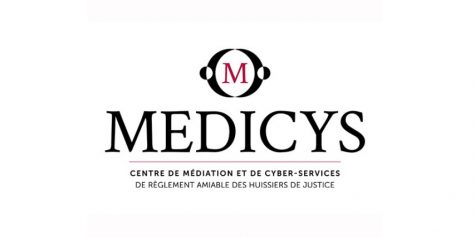Nos logiciels
Cyberjustice solution
In the last few years, our researchers and partners have noticed a stark proliferation of Legal Tech offering justice stakeholders technological tools leveraging AI and big data to prevent and resolve conflicts. In the form of chatbots, online dispute resolution (ODR) platforms, predictive algorithms, these tools promise to empower justice stakeholders.
Cyberjustice Software is a technological solution for judicial services. Used by several courts or public institutions in North America or Europe, the Cyberjustice Software is the result of twenty-five years of research and development (R & D) to develops concrete technological tools that are adapted to the reality of justice systems. This project is initiated by the Professor Karim Benyekhlef, current director of the Cyberjustice Laboratory and by a number dynamic researchers and professionals.
Since 2010, Cyberjustice Software has benefited from direct contribution from many important partners.
Our principles
Our talented team will collaborate with you throughout every step of the software’s implementation. The design process begins and ends with your needs. Once we have tailored a solution that best suits your purposes, sit back and relax while we take care of the rest.
Our software solutions are designed in open-source code, allowing them to be tweaked to suit your needs. Public also refers to the Cyberjustice Laboratory, a publicly funded academic institution working to develop software solutions to improve access to justice, one case at a time.
Our software architecture
Our vision of the software architecture is that it must be based on a layered organization in order to properly separate the functions and responsibilities of the software components.
The software architecture of our platforms has the following characteristics:

Loose couplingSeparation of responsibilities between different components that are weakly dependent on each other. |

Strong cohesionComponent specialization around a set of coherent responsibilities. |
The Three Tiers of the Software Architecture:
1. The presentation tier
This tier is essentially composed of Web pages that will be presented to users.
2. The business logic tier
This tier’s function is to process user requests and prepare information to be posted on the Web pages depending on the context. Its functions require this tier to interact with « Cyberjustice Core Services » or communicate with its own data access tier.
3.The data access tier
This tier provides access to the application’s data base, which holds information specific to the Web application itself. In particular, it could be composed of information to appear on menus and data on user sessions.
Depending on their needs, applications can accommodate various types of users who, once duly registered, can access their files. After authentication, these users are given different roles and access rights depending on their organization and the application’s access rights management policy.
Responsibility for user authentication is delegated to an authentication service that is separate from our software solutions. This way of proceeding ensures greater flexibility when integrating our software into the environments in which they will be deployed.
Authentication services can be an Active Directory domain, a dedicated application using Windows Identity Foundation, or a Google, Facebook or Hotmail authentication service.
OUR CYBERJUSTICE CORE
The Cyberjustice Core is the set of services needed to support our software solutions.
The Cyberjustice Core Services are the services exposed to our software solutions, like PARLe.
The main responsibility of each of these services will be:
- Judicial Files: management of pre-judicial or judicial cases;
- Incident Request Service: management of incidental requests to a file;
- Users Profile Service: management of authentication, identification and user profiles;
- Forms Service: management of the creation, reading, updating and deleting of forms and form templates;
- Documents Service: management of the documents, attachments and envelopes;
- Calendar Service: management of staff calendars, meetings and schedules of courtrooms or organizations providing extra-judicial services;
- Exchange Service: management of user permissions on discussions;
- Hearings Service: management of documents necessary for a hearing;
- Witnesses Service: management of authentication and identification of witnesses and their permissions in a case;
- Secure Mail Service: management of the sending of notification emails (alerts);
- Buildings Services: courts and court facility management (inventory and use);
- Entities Service: management of courts or organizations providing extra-judicial services (such as administrative tribunals);
- Security Service: user authorization management;
- Configuration Service: repository and location services for applications
- Journal (logging) Service: management of actions recorded in a folder;
- Business Rules Service: business rules application service.
Depending on the needs of our partner, our team of programmer-analysts will adapt these services or create new ones!
TECHNOLOGIES
Our software solutions are designed in open code for the Cyberjustice Community partners, allowing:
Our software solutions have been developed with the following technologies:
-
ASP.NET MVC 5 and ASP.NET CORE for Web Application Development
-
HTML5, CSS3, Javascript and JQuery for MVC applications
-
Windows Identity Foundation for Core Services Web Services
-
Entity Framework and LINQ for data manipulation
-
Management of authentication and permissions on the OpenID Connect protocol
-
REACT / Redux (Javascript)
-
ELMAH and NLOG Framework for the error and access log
-
NINJECT Framework for Business Rules Management
We develop and test for Internet Explorer, Google Chrome, Firefox and Safari browsers.
The user interface has been designed to meet the standards of an adaptive website.
All our software solutions can be hosted on physical servers or in the cloud!
Our software solutions
PARLe, short for Online Dispute Resolution Platform, is a technological solution dedicated to the administration of Justice.
ISA is a software module that facilitates the use of technology both in courtrooms (computer and audiovisual tools) and for the presentation of evidence (access to the electronic clerk, annotation sharing tools, etc.) for all the stakeholders of a hearing, whether it is the clerk, the judge or the parties.
The electronic clerk is a Web application that enables the management of the judiciary chain. It is very flexible and adaptable in that it allows for the creation of a court file as well as allowing several categories of users to be associated with that file and follow its evolution throughout the legal process. The electronic clerk is essentially broken up into a number of modules that work both together and separately to enable the management of most of the aspects of the life cycle of a court case without obliging the use of paper files, although this remains a possibility.

Through the Canada Foundation for Innovation, the Cyberjustice Laboratory team is developing a new online dispute resolution platform called "Virtual Court". This platform is highly modular and quickly configurable so that it can model most of the major essential functions of a criminal, civil or administrative justice chain.
Our case studies
The online mediation pilot project conducted jointly by the Office de la protection du consommateur and the Cyberjustice Laboratory is a finalist for the Quebec Public Administration Award of Excellence in the "Digital Initiatives" category.
The Chambre Nationale des Huissiers de Justice is the highest authority representing bailiffs at the Ministry of Justice in France.

The Condominium Authority of Ontario (CAO) is a newly established organization that aims to improve condominium living by providing services and resources for condo owners, residents and directors.
With eRADA, begin disputing a ticket, upload evidence, reach a settlement agreement, request disclosure of evidence or even request a trial date, from the comfort of your electronic device.

The mission of the Ministry of the Attorney General is to administer the justice system, protect the public and ensure legality in government while promoting a fair and accessible justice system.
The Social Justice Tribunals Ontario (SJTO) are adjudicative tribunals with the mandate of dealing with applications and appeals, among other things, in the area of housing law through the Landlord and Tenant Board.
This content has been updated on 08/25/2022 at 16 h 10 min.







